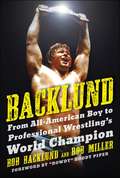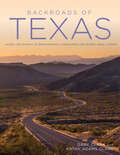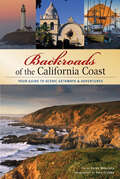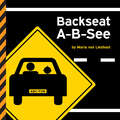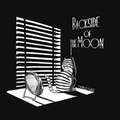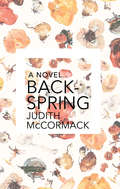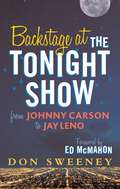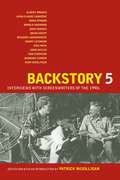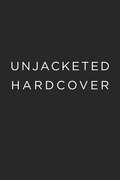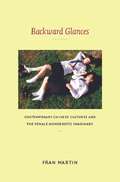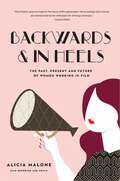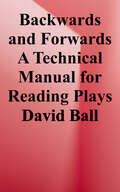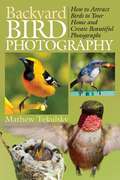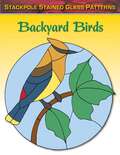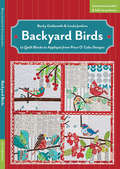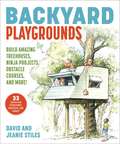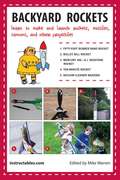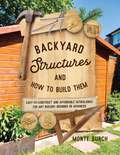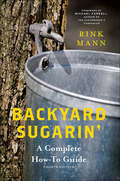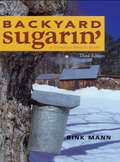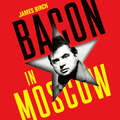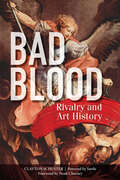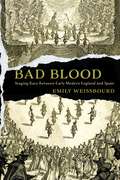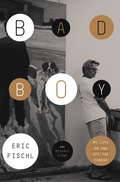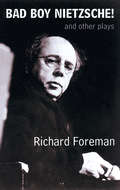- Table View
- List View
Backlund: From All-American Boy to Professional Wrestling's World Champion
by Robert H. Miller Bob Backlund Roddy PiperBob Backlund began life as a poor farm boy in the little village of Princeton, Minnesota, with a population of just over 2,000 people. He was a below-average student with a lackluster work ethic and a bad attitude, who hung with the wrong crowd and made a lot of bad choices. He was a kid whose life was headed for disaster-until a local coach took interest in him, suggested that he take up amateur wrestling, and offered to work with him if he promised to stay out of trouble.It was in North Dakota that Bob Backlund had the first of several chance encounters that would shape his destiny. While working out at the YMCA gymnasium in Fargo, North Dakota, where he wrestled for North Dakota State, Backlund met a well-known professional wrestler, "Superstar” Billy Graham. The men talked, and at Graham’s suggestion, Backlund was inspired to pursue a career in professional wrestling.Less than five years from that day, on February 20, 1978, Backlund would find himself halfway across the country, standing in the middle of the ring at Madison Square Garden with his hand raised in victory as the newly crowned World Wide Wrestling Federation Heavyweight Champion. The man Backlund pinned for the championship that night was none other than "Superstar" Billy Graham.Featuring contributions from Bruno Sammartino, Harley Race, Terry Funk, Pat Patterson, Ken Patera, Sergeant Slaughter, The Magnificent Muraco, George "The Animal” Steele, "Mr. USA” Tony Atlas, The Iron Sheik, and many others, this book tells the incredible story of the life and nearly forty-year career of one of the most famous men to ever grace the squared circle.Skyhorse Publishing, as well as our Sports Publishing imprint, is proud to publish a broad range of books for readers interested in sports-books about baseball, pro football, college football, pro and college basketball, hockey, or soccer, we have a book about your sport or your team.In addition to books on popular team sports, we also publish books for a wide variety of athletes and sports enthusiasts, including books on running, cycling, horseback riding, swimming, tennis, martial arts, golf, camping, hiking, aviation, boating, and so much more. While not every title we publish becomes a New York Times bestseller or a national bestseller, we are committed to publishing books on subjects that are sometimes overlooked by other publishers and to authors whose work might not otherwise find a home.
Backroads of Texas: Along the Byways to Breathtaking Landscapes & Quirky Small Towns
by Gary Clark Kathy Adams ClarkDiscover the strange, sublime, and breathtaking sights of Texas with this illustrated guide featuring thirty backroad excursions.The second largest state in America, Texas is home to a vast array of hidden treasures waiting just off the beaten path. Backroads of Texas guides readers to intriguing sites, offbeat characters, and glorious landscapes that are typically missed by interstate travelers.Watch frenzied bats as they fly by the thousands from San Angelo’s Foster Road Bridge. Catch your breath as you drink in the majestic Guadalupe Mountains. Get ready for goosebumps when you spelunk into the shadowy depths of Inner Space Cavern. And try not to get spooked when you see the paranormal “ghost lights” near the eclectic town of Marfa. These off-road sights are what truly set the Lone Star State apart from its neighbors.Completely reimagined for a new generation of road-trip takers and explorers, Backroads of Texas is lavishly illustrated with photographs, maps, and vintage advertising of Texas’s many scenic, historic, and cultural attractions.
Backroads of the California Coast: Your Guide to Scenic Getaways & Adventures
by Karen MisuracaA guide to exploring the natural beauty and historic sites of the Pacific coast via a selection of lesser-known scenic routes throughout California.From sprawling beaches to dramatic cliffs, the landscapes carved out by the mighty Pacific Ocean have been a destination for adventure and discovery since the earliest Spanish explorers arrived in the 1600s. While here and there the coastal wilderness has given way to California’s largest and most cosmopolitan cities, the backroads and mountain lanes afford countless opportunities to experience the quiet of nature or explore the history of centuries-old communities. Visit sleepy fishing villages and historic landmarks of the Old West; hike through lush wilderness and fish in clear mountain streams; or catch some waves at one of the many pristine beaches along California’s glorious coastline.With glorious color photography and detailed descriptions, maps, and directions, Backroads of the California Coast offers two dozen fascinating and scenic journeys through some of the nation’s most glorious landscapes.
Backseat A-B-See
by Maria van Lieshout“Just when you thought there couldn’t possibly be another idea for an alphabet book—buckle up for this one! . . . Clever [and] fun.” —Kirkus Reviews (starred review).Vroom! Vroom! Whether on a cross-country road trip or a quick jaunt across town, there’s no end to what a child can see from the backseat of a car. Using familiar road signs, this striking book introduces little ones not just to the alphabet but also to the world around them.Equally perfect for transportation-obsessed children and those just learning to read, this fresh and dynamic picture book will entertain and educate at home, in the classroom, and on the go.“Backseat drivers will enjoy learning the language of the road along with their ABCs.” —Publishers Weekly“The alphabet. In road signs. Genius.” —Wired
Backside of the Moon: Keeping Your Zen, One Smile At A Time
by Tango GaoThe first book by Shanghai-born visual artist, cartoonist, social media phenomenon, and advertising executive Tango to be published in the United States, MADITATION is a brilliantly tongue-in-cheek dissection of the everyday insanities of 21st-century urban living--and a witty guide to how to keep one's calm in the midst of the craziness. Tango's doodles have a simple, fluent, and funny style. His humor is obvious without words and explanation. Everything he draws has its own expression. Even air has a shape and a piece of bread can be a protagonist. Tango celebrates finding joy and surprise in our daily life. No matter how small we are and how frustrating life can be, we shall endeavor to feel “alive." Tango's playful line drawings may just help you attain inner peace and tranquility--but at the very least they will make you smile.
Backspring
by Judith Mccormack"A joy to read. "—Nino Ricci "A wonderfully and uniquely gifted storyteller. "—Midwest Book Review Eduardo, an architect from Lisbon, has come to Montreal to be with his wife Geneviève. Geneviève researches fungi and likes to catalog her orgasms. But when Eduardo is caught in an explosion and rumors of arson begin to circulate, both his marriage and his fledgling architecture firm verge on collapse. Gorgeous, colorful, and richly described, Backspring is a sensual taxonomy of desire. Judith McCormack, born near Chicago, has been nominated for the Commonwealth Writers Prize and the Rogers Writers' Trust Fiction Award.
Backstage at the Tonight Show: From Johnny Carson to Jay Leno
by Don SweeneyThis book is a collection of celebrity vignettes and anecdotes from the peak years of the Tonight Show, and includes behind-the-scenes looks at more than two dozen celebrities, including Joan Rivers, Bill Cosby, Frank Sinatra, Ray Charles, Tony Randall, Don Rickles, Stevie Wonder, Martin Short, Liza Minnelli, Ed McMahon, and Johnny Carson himself. With an eye for the eccentric, amusing, or downright bizarre, Sweeney's brief portraits offer a glimpse at celebrity from the other side of the curtain.
Backstory 5: Interviews with Screenwriters of the 1990s
by Patrick McGilliganPatrick McGilligan continues his celebrated interviews with exceptional screenwriters in Backstory 5, focusing on the 1990s. The thirteen featured writers—Albert Brooks, Jean-Claude Carrière, Nora Ephron, Ronald Harwood, John Hughes, David Koepp, Richard LaGravenese, Barry Levinson, Eric Roth, John Sayles, Tom Stoppard, Barbara Turner, and Rudy Wurlitzer—are not confined to the 1990s, but their engrossing, detailed, and richly personal stories create, in McGilligan’s words, "a snapshot of a profession in motion." Emphasizing the craft of writing and the process of collaboration, this new volume looks at how Hollywood is changing to meet new economic and creative challenges. Backstory 5 explores how these writers come up with their ideas, how they go about adapting a stage play or work of fiction, how they organize and structure their work, and much more.
Backstory 5: Interviews with Screenwriters of the 1990s
by Patrick McgilliganPatrick McGilligan continues his celebrated interviews with exceptional screenwriters with Backstory 5, focusing on the 1990s. The thirteen featured writers are not confined to the 1990s, but their engrossing, detailed, and richly personal stories create, in Patrick's words, "a snapshot of a profession in motion."
Backward Glances: Contemporary Chinese Cultures and the Female Homoerotic Imaginary
by Fran MartinBackward Glances reveals that the passionate love one woman feels for another occupies a position of unsuspected centrality in contemporary Chinese mass cultures. By examining representations of erotic and romantic love between women in popular films, elite and pulp fiction, and television dramas, Fran Martin shows how youthful same-sex love is often framed as a universal, even ennobling, feminine experience. She argues that a temporal logic dominates depictions of female homoeroticism, and she traces that logic across texts produced and consumed in mainland China, Hong Kong, and Taiwan during the twentieth century and the early twenty-first. Attentive to both transnational cultural flows and local particularities, Martin shows how loving relations between women in mass culture are usually represented as past experiences. Adult protagonists revel in the repeated, mournful narration of their memories. Yet these portrayals do not simply or finally consign the same-sex loving woman to the past--they also cause her to reappear ceaselessly in the present. As Martin explains, memorial schoolgirl love stories are popular throughout contemporary Chinese cultures. The same-sex attracted young woman appears in both openly homophobic and proudly queer-affirmative narratives, as well as in stories whose ideological valence is less immediately clear. Martin demonstrates that the stories, television programs, and films she analyzes are not idiosyncratic depictions of marginal figures, but manifestations of a broader, mainstream cultural preoccupation. Her investigation of representations of same-sex love between women sheds new light on contemporary Chinese understandings of sex, love, gender, marriage, and the cultural ordering of human life.
Backwards & In Heels: The Past, Present and Future of Women Working in Film
by Alicia MaloneStories of women in the film industry, onscreen and off, and interviews with Ava DuVernay, America Ferrera, Geena Davis, Octavia Spencer, and more. Ginger Rogers did everything that Fred Astaire did. She just did it backwards and in high heels . . . One of the first people to ever pick up a motion picture camera was a woman—as was the first screenwriter to win two Academy Awards, the inventor of the boom microphone, and the first person to be credited with the title Film Editor. From Hollywood&’s earliest days, women have been revolutionizing, innovating, and shaping how we make movies. Yet their stories are rarely shared. In Backwards and in Heels, film reporter and author of The Female Gaze Alicia Malone tells the history of women in film through stories about incredible ladies who made their mark throughout each era of Hollywood, from the first women directors, to the iconic movie stars, to present-day activists. These inspiring stories also highlight the specific obstacles women have had to face. Backwards and in Heels combines research and exclusive interviews with influential women and men working in Hollywood today, such as Geena Davis, J.J. Abrams, Ava DuVernay, Octavia Spencer, America Ferrera, Paul Feig, Todd Fisher, and many more, as well as film professors, historians, and experts.
Backwards and Forwards: A Technical Manual for Reading Plays
by David BallConsidered an essential text since its publication thirty-five years ago, this guide for students and practitioners of both theater and literature complements, rather than contradicts or repeats, traditional methods of literary analysis of scripts. <p><p>The author developed his method during his work as literary director at the Guthrie Theater, building his guide on the crafts playwrights of every period and style use to make their plays stage-worthy. The text is full of tools for students and practitioners to use as they investigate plot, character, theme, exposition, imagery, conflict, theatricality, and the other crucial parts of the superstructure of a play. <p><p>Also included are guides for discovering what the playwright considers a play' s most important elements, thus permitting interpretation based on the foundation of the play rather than its details. Using Shakespeare's Hamlet as illustration, the author assures a familiar base for clarifying script-reading techniques as well as exemplifying the kinds of misinterpretation readers can fall prey to by ignoring the craft of the playwright. Of immense utility to those who want to put plays on the stage (actors, directors, designers, production specialists) Backwards & Forwards is also a fine playwriting manual because the structures it describes are the primary tools of the playwright.
Backyard Bird Photography: How to Attract Birds to Your Home and Create Beautiful Photographs
by Mathew TekulskyFans of bird watching will rejoice with Backyard Bird Photography, a guide for learning how to set up your backyard in order to take the best photographs of your local birds. In addition to guiding you through the first steps of setting up your plantings and bird feeders, this book describes the types of photographic equipment you will need to get just the right image; how to maneuver yourself into just the right position to create a quality bird photograph; how to compose your shots for the greatest visual effect; and how to use more advanced techniques such as macro lenses and external flash techniques.Author and bird photographer Mathew Tekulsky breaks down the challenges of photographing these beautiful creatures and explains how utilizing your own natural surroundings can create stunning shots that rival those shot in the wild. Tekulsky explains that when your garden is set up as a tiny oasis for these feathered friends--with the right foliage, water sources, and feeders--then your backyard will be frequented by a variety of species on any given day. With tips for gaining the bird's trust and composition, every photograph will come out a stunner.
Backyard Birds (Stained Glass Patterns)
by Sandy AllisonA great selection of 25 patterns for making beautiful stained glass panels of backyard birds.
Backyard Birds: 12 Quilt Blocks to Appliqué from Piece O'Cake Designs
by Becky Goldsmith Linda JenkinsThe bestselling design team guides you in stitching up a flock of cheery appliqué birds.Appliqué lovers, you’ll want to make all 12 of these endearing blocks featuring robins, cardinals, orioles, and other feathered friends from the back yard. Designed in the lively Piece O’ Cake style by Linda Jenkins and Becky Goldsmith, these blocks are bursting with fresh colors and are easy enough to be fun for stitchers of all levels. Pattern pack includes a 16-page instruction booklet and full-size patterns for 12 blocks, plus appliqué borders, that make a 52” x 65” quilt and instructions for a 4 block 39'' x 39'' quilt. Or mix and match your favorite blocks to perk up quilts, pillows, tote bags, or apparel.
Backyard Playgrounds: Build Amazing Treehouses, Ninja Projects, Obstacle Courses, and More!
by David Stiles Jeanie StilesBuild your own treehouses, swing sets, skate ramps, Ninja courses, and more! Kids and families of all ages are rediscovering the great outdoors, including their own backyards. It is more important than ever to be able to entertain our kids at home, teach them about nature, and give them a great time building, exercising, staying in shape, and working together. All of these actions help foster independence, confidence, and growth. In Do-It-Yourself Backyard Playgrounds, authors Jean and David Stiles offer user-friendly plans (all hand-drawn by David) and step-by-step instructions to help you build something great in your own backyard. They offer a range of easy, timeless projects that can be made in an afternoon—trolley ride, treasure chest, circle swing, lemonade stand—alongside more ambitious projects, like the warped wall and treehouse. Learn how to build a complete Ninja adventure course and see how the treehouse can double as a home base for the adventure course that radiates from it! The book includes photos of projects (during construction and completed), and explanatory step-by-step illustrations.
Backyard Rockets: Learn to Make and Launch Rockets, Missiles, Cannons, and Other Projectiles
by Instructables. Com Mike WarrenOriginating from Instructables, a popular project-based community made up of all sorts of characters with wacky hobbies and a desire to pass on their wisdom to others, Backyard Rockets is made up of projects from a medley of authors who have collected and shared a treasure trove of rocket-launching plans and the knowledge to make their projects soar!Backyard Rockets gives step-by-step instructions, with pictures to guide the way, on how to launch your very own project into the sky. All of these authors have labored over their endeavors to pass their knowledge on and make it easier for others to attempt. Discover how to create the following projects:Teeny, Tiny Rocket EngineUltimate Straw RocketRocket EggstronautPocket Rocket LauncherIron Man Model RocketModel Rocket with CameraRocket-Powered Matchbox Cars - ExtremeAnd much more!The Instructables community has provided a compendium of rocket savvy from innovators who have paved the way for other curious minds. In addition to rockets, fireworks, and launchers in Backyard Rockets, you will discover the sense of accomplishment after watching your rocket soar into the sky!
Backyard Structures and How to Build Them: Easy-to-Construct and Affordable Outbuildings for Any Builder, Beginner or Advanced
by Monte BurchDoes your backyard or garden look bleak and boring? Has your spouse ever told you that you need your own work building? Are your children's toys overflowing into the neighbor's yard because you have nowhere to put them? Have you ever thought about investing in a screened-in porch or a greenhouse? If you answered yes to any of these questions, this is the book for you. We all know that hiring a contractor or builder to take care of backyard projects can be costly and frustrating. Monte Burch's Backyard Structures and How to Build Them will show you how to undertake these projects yourself—saving time and money—and still end up with beautiful new outbuildings. Everything you need to know—from getting started to purchasing tools and materials to the final construction—is covered here. Over two dozen attractive and practical building plans with material lists are fully presented in this book. Many of the structures are pole buildings, which require no foundation excavation, only limited grading, and few materials. They also allow for the use of sites not suitable for other types of construction and offer excellent structural integrity and wind resistance. With sections on decks and patios, backyard decor, backyard playing, backyard shelters, and animal houses and feeders, you can learn to build: Under-deck storage Walk-through rose trellis Classic picnic table Playhouse Picnic shelter Attached carport Drive-thru "mini" pole shed Birdhouses Suspended bird feeder Poultry housing Rabbit housing One-stall horse stable And many more Burch's fresh ideas offer something for everyone. Better still, their simplicity and ease of construction make them ideal for the first-time builder.
Backyard Sugarin': A Complete How-To Guide (4th Edition)
by Rink Mann Michael FarrellFrom buying equipment to tapping your own trees to boiling the sap, this is the classic, best-selling guide to making maple syrup This little book swept maple sugarin’ buffs off their feet when it first appeared and is still the top-selling guide to the craft after over 40 years in print. Backyard Sugarin’ tells you how you can make maple syrup right in your own backyard without having to build a sap house or buy buckets, holding tanks, evaporators, and other expensive paraphernalia. This new edition also features a foreword by maple expert Michael Farrell, author of The Sugarmaker’s Companion, who provides a contemporary look back at the old-school techniques presented in this book. With detailed “how-to” information and tips from sugarers across the country, this is the only maple sugaring guide you’ll ever need.
Backyard Sugarin': A Complete How-To Guide (Third Edition)
by Rink Mann<P> From buying equipment to tapping your own trees to boiling the sap, this is the classic, best-selling guide to making maple syrup. <P> This little book swept maple sugarin' buffs off their feet when it first appeared and is still the top-selling guide to the craft after nearly 30 years in print. Like the previous editions, this one tells you how you can make maple syrup right in your own backyard without having to build a sap house or buy buckets, holding tanks, evaporators and other expensive paraphernalia. Provides detailed "how-to" information, and makes some new and noteworthy revelations-including tips sugarers across the country have shared with the author.
Bacon in Moscow
by James Birch'A rollicking cultural adventure before the fall of the Berlin Wall and the meteoric rise of contemporary art in the nineties' Grayson PerryThis funny and personal memoir is the account of an audacious attempt by James Birch, a young British curator, to mount the ground-breaking retrospective of Francis Bacon's work at the newly refurbished Central House of Artists, Moscow in 1988.Side-lined by the British establishment, Birch found himself at the heart of a honey-trap and the focus for a picaresque cast of Soviet officials, attachés and politicians under the forbidding eye of the KGB as he attempted to bring an unseen western cultural icon to Russia during the time of 'Glasnost', just before the fall of the Berlin Wall.Bacon in Moscow is the story of the evolution of an exhibition that was at the artistic and political heart of a sea of change that culminated with the fall of the USSR.
Bad Blood: Rivalry and Art History
by Clayton SchusterWhy is there so much bad blood involved in the stories of artists and their artworks? Immerse yourself in 18 infamous artistic rivalries, dramatized with gripping moments of narrative, to understand how the rivalries that art fans love to gossip about serve a larger purpose in the way cultures approach the idea of art and the artist. Why did Michelangelo loathe Raphael for decades after the latter had died? How did Pablo Picasso and Henri Matisse balance their perpetual competition with a lifelong friendship? What transgression pitted the notorious titans of the London graffiti scene, Banksy and King Robbo, in a rivalry that ended with a tragic and unforeseeable death? An investigative journey transforms some of the “big names” of the art world into real people—often grumpy, ornery, antagonistic, and flawed—and better reveals how all of us respond to art.
Bad Blood: Staging Race Between Early Modern England and Spain (RaceB4Race: Critical Race Studies of the Premodern)
by Emily WeissbourdBad Blood explores representations of race in early modern English and Spanish literature, especially drama. It addresses two different forms of racial ideology: one concerned with racialized religious difference—that is, the notion of having Jewish or Muslim “blood”—and one concerned with Blackness and whiteness. Shakespeare’s Othello tells us that he was “sold to slavery” in his youth, a phrase that evokes the Atlantic triangle trade for readers today. For many years, however, scholars have asserted that racialized slavery was not yet widely understood in early modern England, and that the kind of enslavement that Othello describes is related to Christian-Muslim conflict in the Mediterranean rather than the rise of the racialized enslavement of Afro-diasporic subjects.Bad Blood offers a new account of early modern race by tracing the development of European racial vocabularies from Spain to England. Dispelling assumptions, stemming from Spain’s historical exclusion of Jews and Muslims, that premodern racial ideology focused on religious difference and purity of blood more than color, Emily Weissbourd argues that the context of the Atlantic slave trade is indispensable to understanding race in early modern Spanish and English literature alike. Through readings of plays by Shakespeare, Lope de Vega, and their contemporaries, as well as Spanish picaresque fiction and its English translations, Weissbourd reveals how ideologies of racialized slavery as well as religious difference come to England via Spain, and how both notions of race operate in conjunction to shore up fantasies of Blackness, whiteness, and “pure blood.” The enslavement of Black Africans, Weissbourd shows, is inextricable from the staging of race in early modern literature.
Bad Boy
by Michael Stone Eric FischlIn Bad Boy, renowned American artist Eric Fischl has written a penetrating, often searing exploration of his coming of age as an artist, and his search for a fresh narrative style in the highly charged and competitive New York art world in the 1970s and 1980s. With such notorious and controversial paintings as Bad Boy and Sleepwalker, Fischl joined the front ranks of America artists, in a high-octane downtown art scene that included Andy Warhol, David Salle, Julian Schnabel, and others. It was a world of fashion, fame, cocaine and alcohol that for a time threatened to undermine all that Fischl had achieved. In an extraordinarily candid and revealing memoir, Fischl discusses the impact of his dysfunctional family on his art--his mother, an imaginative and tragic woman, was an alcoholic who ultimately took her own life. Following his years as a student at Cal Arts and teaching in Nova Scotia, he describes his early years in New York with the artist April Gornik, just as Wall Street money begins to encroach on the old gallery system and change the economics of the art world. Fischl rebelled against the conceptual and minimalist art that was in fashion at the time to paint compelling portraits of everyday people that captured the unspoken tensions in their lives. Still in his thirties, Eric became the subject of a major Vanity Fair interview, his canvases sold for as much as a million dollars, and The Whitney Museum mounted a major retrospective of his paintings. Bad Boy follows Fischl's maturation both as an artist and sculptor, and his inevitable fall from grace as a new generation of artists takes center stage, and he is forced to grapple with his legacy and place among museums and collectors. Beautifully written, and as courageously revealing as his most provocative paintings, Bad Boy takes the reader on a roller coaster ride through the passion and politics of the art world as it has rarely been seen before.
Bad Boy Nietzsche! and Other Plays
by Richard ForemanRichard Foreman has been at the leading edge of the theatrical avant-garde in the United States and throughout the world since 1968. His legendary productions, written and directed by him at his Ontological-Hysteric Theatre have influenced two generations of theater artists. This new anthology collects plays written and performed over six years, including Now That Communism Is Dead My Life Feels Empty, Maria del Bosco, Panic (How to Be Happy!), Bad Boy Nietzsche!, Bad Behavior and King Cowboy Rufus Rules the Universe.Richard Foreman founded the Ontological-Hysteric Theatre in 1968. The theater is currently in the historic St. Marks Church, where he rehearses and produces one of his new plays each year, each play performing for 16 weeks every winter.
